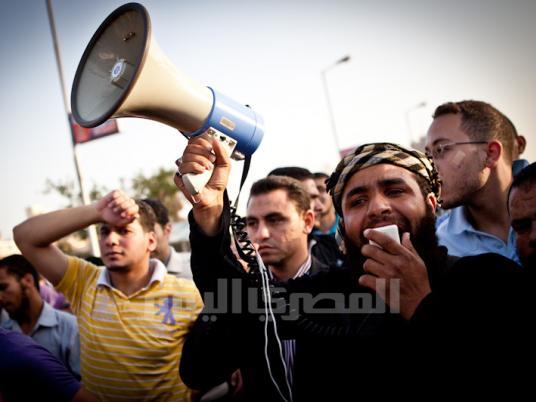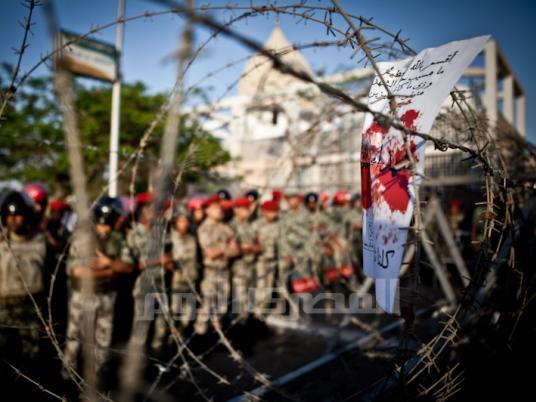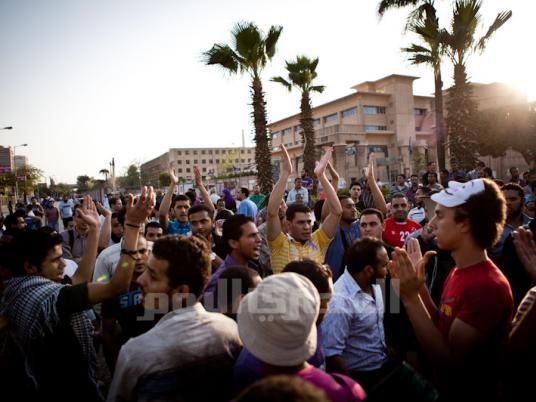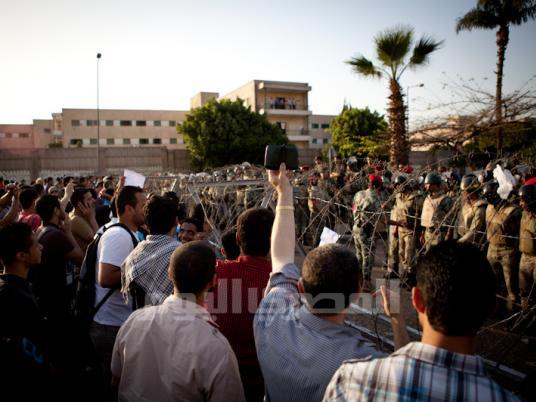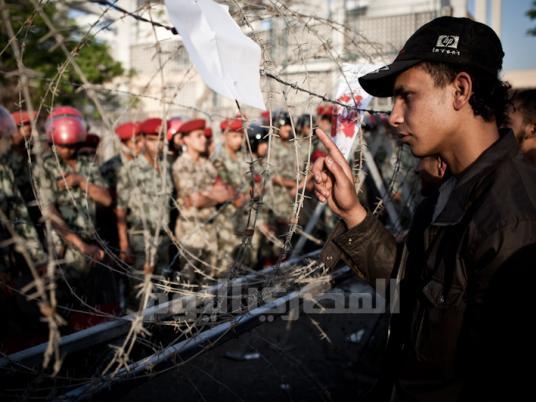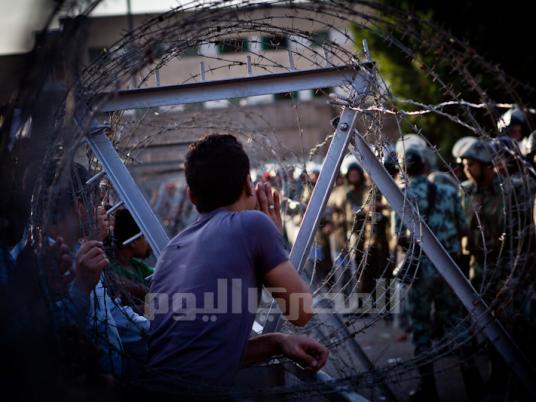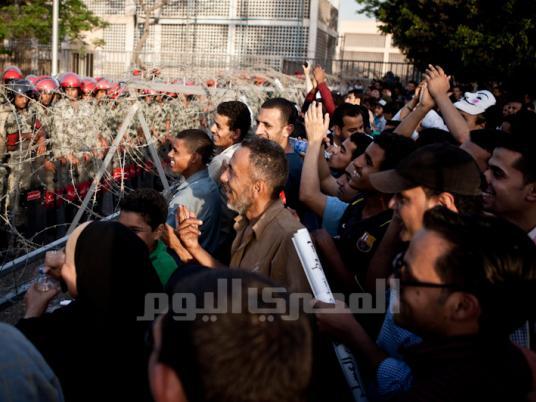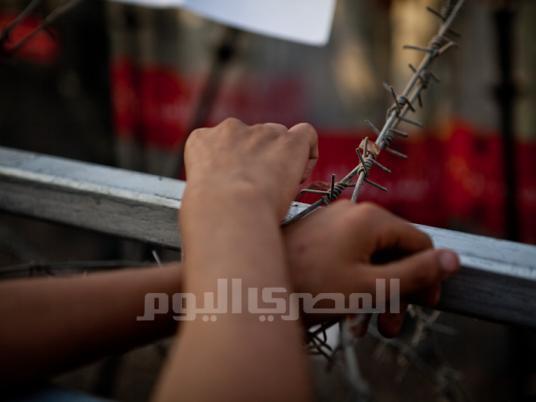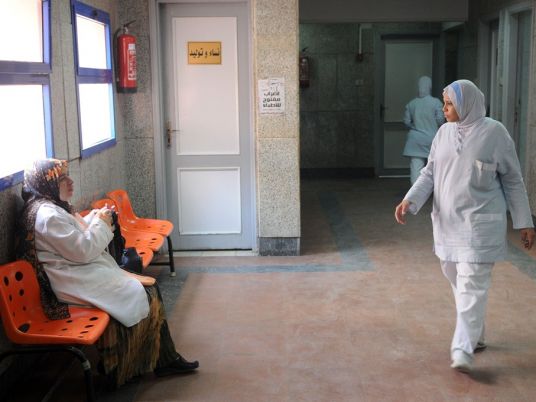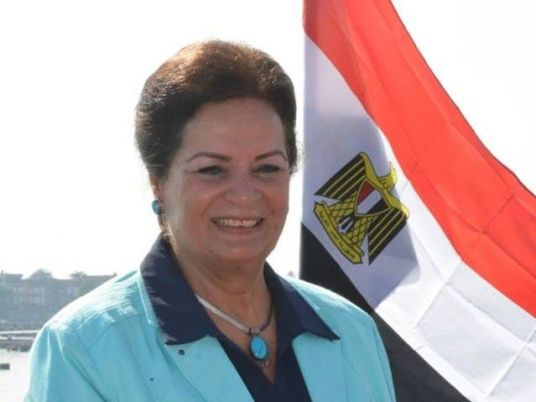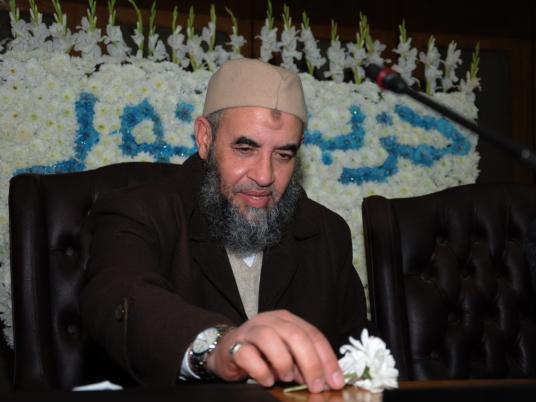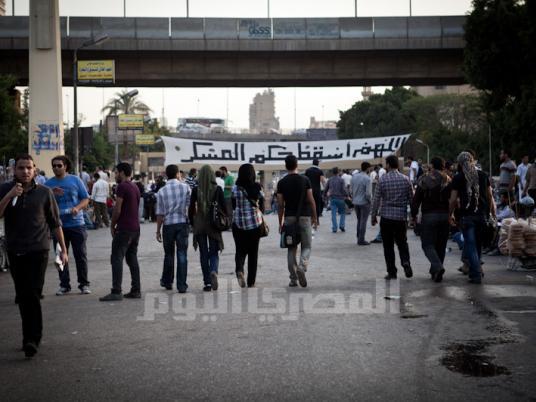
Protesters in the area of Abbasseya Square said Sunday they would continue their sit-in a day after it was attacked.
The Health Ministry says one person was killed and over 100 injured after clashes broke out at the protest on Saturday evening.
Rocks and Molotov cocktails were thrown by an unknown group of people, and eyewitnesses reported hearing gunfire. One video posted on YouTube, allegedly from the scene of the clashes, shows a man firing a pistol directly at the cameraman.
One eyewitness, engineer Tareq Abbas, described a large group of mostly young people descending on the protest from the direction of Abbasseya Square hurling rocks and other missiles.
The clashes continued early into Sunday morning, when they petered out. Eyewitnesses described seeing army soldiers withdraw from the scene of the clashes without intervening.
On Sunday afternoon numbers at the protest were small. Members of the April 6 Youth Movement and ultra football fans gathered at a military barbed wire cordon erected on the road that leads to the Defense Ministry and chanted slogans against the ruling Supreme Council of the Armed Forces.
On Saturday SCAF member General Hassan al-Roweiny went to the sit-in, which began on Friday evening after an impromptu march by the “Suwar BilaTayar” group (Revolutionaries Without Direction) and supporters of Salafi Sheikh Hazem Salah Abu Ismail from Tahrir Square, where Abu Ismail supporters have been camped out following the decision to exclude him from the presidential race.
Roweiny reportedly demanded that the protesters return to Tahrir Square.
Several protesters at the sit-in were of the opinion that the SCAF had a hand in encouraging Saturday’s violence; some even suggested that plain-clothed military personnel were involved in the clashes or that the military hired paid “thugs” to attack the sit-in.
At a press conference held on Sunday, protesters said the SCAF has been trying to divide the Egyptian people since it took power in February 2011 and that they support the People’s Assembly — which on Sunday announced it would suspend sessions until the dissolution of Kamal al-Ganzouri’s government — as “the only elected body in the country.”
Protesters called for the creation of a transitional government and for the military not to be given a special position in the next constitution.
Abu Ismail’s supporters have come under heavy fire from other political movements for their activism in support of the former presidential candidate, who is alleged to have concealed the fact that his deceased mother at one point was an American citizen.
Under the Constitutional Declaration drawn up by the SCAF last year, the parents of presidential candidates may not be dual nationals.
Two Abu Ismail supporters insisted that the media had “deliberately misrepresented” the sit-in by making it appear that it was purely about Abu Ismail’s exclusion, when their demands are broader than this.
However, the head of the Lazem Hazem (It has to be Hazem) campaign, Gamal Saber, listed the campaign’s primary “and most important” demand as the annulment of Article 28 of the Constitutional Declaration, which makes decisions of the Presidential Elections Commission immune from judicial challenge. It was this commission that excluded Abu Ismail from the presidential race.
“We have the right to choose our president. We won’t accept a president manufactured by America or the SCAF,” Saber said.
After some prodding, Saber said that protesters are also calling for the military council to leave power and that the sit-in will continue until their demands are met.
April 6 member Ahmed Hendawy, a student, said that he joined the protest in solidarity with Abu Ismail supporters following the attack on the sit-in, though he disagrees with their aims.
Hendawy was critical of what he said was the failure of Islamist movements to show solidarity with other political forces during clashes between protesters and security forces last year.
Sit-ins and protests are a “burnt card,” Hendawy suggested, and fail to gather public support — “but I’m still here because the sit-in was attacked,” he said.
Abbas, the engineer, held up a sign reading “I’m not a Sheikh Hazem supporter or a supporter of any sheikh, I’m here to save the revolution and expose SCAF games.”
“It’s the people who should exclude a presidential candidate, not a commission. The Egyptian people have political awareness and will reject Hazem’s ideas,” Abbas said.

